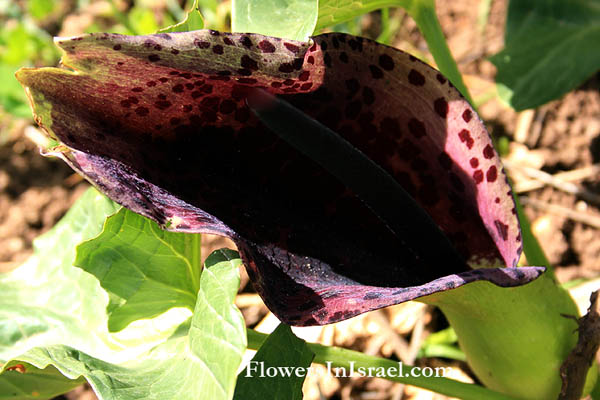Hebrew: לוף ארצישראלי, Arabic: اللوف الفلسطيني
| Scientific name: | Arum palaestinum Boiss. | |
| Common name: | Palestine Arum | |
| Hebrew name: | לוף ארצישראלי | |
| Arabic name: | اللوف الفلسطيني | |
| Family: | Araceae, לופיים |

|
| Life form: | Geophyte | |
| Stems: | 20-60 cm tall | |
| Leaves: | Rosette, entire | |
| Flowers: | Purple | |
| Fruits / pods: | Cluster of red-orange berries | |
| Flowering Period: | March, April | |
| Habitat: | Batha, Phrygana | |
| Distribution: | Mediterranean Woodlands and Shrublands, Semi-steppe shrublands, Shrub-steppes, Montane vegetation of Mt. Hermon | |
| Chorotype: | Mediterranean | |
| Summer shedding: | Ephemeral |

Derivation of the botanical name: Arum. The name "Aron," with the Greek termination, has been used in the most ancient times, having been applied by Hippocrates (c.460 - c.377 BCE), Theophrastus (370 - about 285 BCE), Dioscorides (ca. 40 - ca.90 CE) and Pliny (23 - 79 CE), but by the latter with the Latin termination (Arum). palaestinum, from Palestine. The Hebrew word: לןף, luf, from Aramaic: לופא, Lufa, Arabic: לופ, lup.
See the list of Medicinal herbs in Israel, the parts used and their medical uses to treat various diseases. |